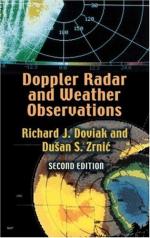|
This section contains 196 words (approx. 1 page at 300 words per page) |
The changing frequency of sound waves emitted from a moving object was documented by Austrian physicist Christian Doppler in 1842 and termed the "Doppler effect." This concept was applied to radar in the 1970s, spurring the development of Doppler radar. Doppler radar is based on the concept that an approaching storm emits sound waves at a higher frequency than does a retreating storm. Doppler radar allowed for more advanced methods of weather forecasting because, unlike previous radar, it could not only determine whether precipitation and other severe weather conditions were in an area, it could determine the direction and wind speed of the system. Doppler radar also allows for earlier detection of a severe weather system. For example, conventional radar can detect a tornado only two minutes before its arrival; Doppler radar allows for a 20-minute warning.
The National Weather Service began replacing its conventional radar system with Doppler radar in the mid-1990s. The Service now operates 156 high-powered Doppler radar stations across the United States (including Alaska and Hawaii), Guam and Korea. Each station can detect precipitation and severe weather systems from approsimately 285 miles away and measure winds from approximately 150 miles away.
|
This section contains 196 words (approx. 1 page at 300 words per page) |


